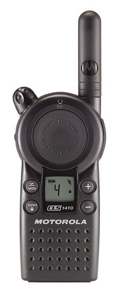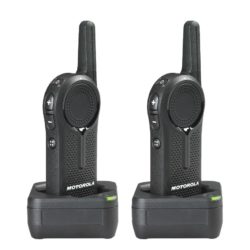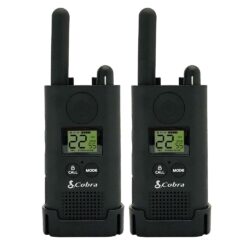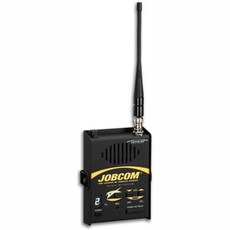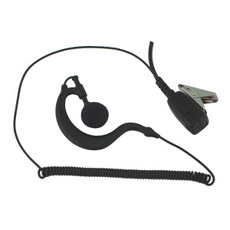Last month we told you about some exciting changes to Midland's 2012 lineup of FRS/GMRS two way radios. We now have more details and we're even more excited to pass them along to you. Early this year, Midland promised technical and cosmetic upgrades to its line of consumer radios, including new models. Midland has made many enhancements and performance improvements to its entire line of two way radios during the last few years, and they are taking it all to the next level in 2012.
Feature Upgrades
Among new products to be introduced this year is the new GXT2000 Series. According to Midland, the new GXT2000 and GXT2050 radios will each offer a large, easy to read LCD display. A fast charging, higher capacity lithium polymer battery will also be included to provide longer battery life. This battery can charge from 0-90% in about an hour and trickle charge the final 10% in less than another. The battery upgrade will be a welcome one for hikers, campers and others who love the outdoors and need a battery that charges faster and lasts longer out in the field.
In addition to the new models, Midland's 2012 lineup includes two popular, tried and true standards, the GXT1000VP4 and the GXT1050VP4.
All Midland two way radios include a 3 year warranty, proving their commitment to stand behind their products.
2012 Model Specifications
Here is a sneak peek at the lineup of new models with the manufacturer's suggested retail prices. We expect to have them in stock by mid-summer of 2012. Note that actual prices may vary on release.
 NOW AVAILABLE! LXT118 (MSRP $24.99) - 22 channels, channel scan, keypad lock, eVOX, call alert, auto squelch, dual power options, keystroke tones, mic and headphone jacks, charges through the headset jack, battery life extender, water resistant.
NOW AVAILABLE! LXT118 (MSRP $24.99) - 22 channels, channel scan, keypad lock, eVOX, call alert, auto squelch, dual power options, keystroke tones, mic and headphone jacks, charges through the headset jack, battery life extender, water resistant.
NOW AVAILABLE! LXT118VP (MSRP $34.99) - This is the LXT118 in a value pack with two radios, beltclips, rechargeable AAA batteries, AC adapter and owner's manual.
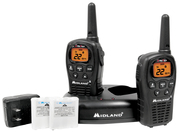 NOW AVAILABLE! LXT500VP3 (MSRP $39.99) - 22 channels, silent operation, HI/LO power settings, channel scan, keypad lock, call alert, auto squelch, dual power options, roger beep, keystroke tones, mic and headphone jacks, drop-in charger capable, battery life extender, water resistant.
NOW AVAILABLE! LXT500VP3 (MSRP $39.99) - 22 channels, silent operation, HI/LO power settings, channel scan, keypad lock, call alert, auto squelch, dual power options, roger beep, keystroke tones, mic and headphone jacks, drop-in charger capable, battery life extender, water resistant.
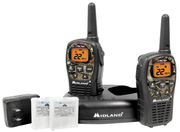 NOW AVAILABLE! LXT535VP3 (MSRP $49.99) - 22 channels, silent operation, HI/LO power settings, channel scan, keypad lock, call alert, auto squelch, dual power options, roger beep, keystroke tones, mic and headphone jacks, drop-in charger capable, battery life extender, water resistant.
NOW AVAILABLE! LXT535VP3 (MSRP $49.99) - 22 channels, silent operation, HI/LO power settings, channel scan, keypad lock, call alert, auto squelch, dual power options, roger beep, keystroke tones, mic and headphone jacks, drop-in charger capable, battery life extender, water resistant.
NOW AVAILABLE! LXT560VP3 (MSRP $59.99) - 22 channels plus 14 extra channels, 121 privacy codes, NOAA weather alert radio with weather scan, LCD backlit display, silent operation, HI/LO power settings, channel scan, keypad lock, call alert, auto squelch, monitor, dual power options, roger beep, keystroke tones, mic and headphone jacks, drop-in charger capable, battery life extender, water resistant.
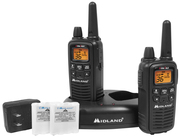 NOW AVAILABLE! LXT600VP3 - (MSRP $69.99) - 22 channels plus 14 extra channels, 121 privacy codes, NOAA weather alert radio with weather scan, LCD backlit display, silent operation, HI/LO power settings, eVOX, channel scan, keypad lock, 5 call alerts, auto squelch, monitor, dual power options, roger beep, keystroke tones, mic and headphone jacks, drop-in charger capable, battery life extender, water resistant.
NOW AVAILABLE! LXT600VP3 - (MSRP $69.99) - 22 channels plus 14 extra channels, 121 privacy codes, NOAA weather alert radio with weather scan, LCD backlit display, silent operation, HI/LO power settings, eVOX, channel scan, keypad lock, 5 call alerts, auto squelch, monitor, dual power options, roger beep, keystroke tones, mic and headphone jacks, drop-in charger capable, battery life extender, water resistant.
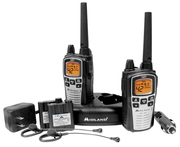 NOW AVAILABLE! GXT860VP4 - (MSRP $79.99) - 22 channels plus 20 extra channels, 142 privacy codes, NOAA weather alert radio with weather scan, LCD backlit display, vibrate alert, silent operation, HI/MED/LO power settings, eVOX, channel scan, keypad lock, 10 call alerts, auto squelch, monitor, dual power options, roger beep, keystroke tones, mic and headphone jacks, drop-in charger capable, battery life extender, water resistant.
NOW AVAILABLE! GXT860VP4 - (MSRP $79.99) - 22 channels plus 20 extra channels, 142 privacy codes, NOAA weather alert radio with weather scan, LCD backlit display, vibrate alert, silent operation, HI/MED/LO power settings, eVOX, channel scan, keypad lock, 10 call alerts, auto squelch, monitor, dual power options, roger beep, keystroke tones, mic and headphone jacks, drop-in charger capable, battery life extender, water resistant.
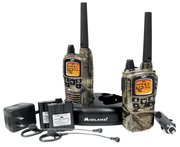 NOW AVAILABLE! GXT895VP4 - (MSRP $89.99) - Camo shell, 22 channels plus 20 extra channels, 142 privacy codes, NOAA weather alert radio with weather scan, LCD backlit display, vibrate alert, silent operation, HI/MED/LO power settings, eVOX, channel scan, keypad lock, 15 call alerts, 5 animal call alerts, auto squelch, monitor, dual power options, roger beep, keystroke tones, mic and headphone jacks, drop-in charger capable, battery life extender, water resistant.
NOW AVAILABLE! GXT895VP4 - (MSRP $89.99) - Camo shell, 22 channels plus 20 extra channels, 142 privacy codes, NOAA weather alert radio with weather scan, LCD backlit display, vibrate alert, silent operation, HI/MED/LO power settings, eVOX, channel scan, keypad lock, 15 call alerts, 5 animal call alerts, auto squelch, monitor, dual power options, roger beep, keystroke tones, mic and headphone jacks, drop-in charger capable, battery life extender, water resistant.
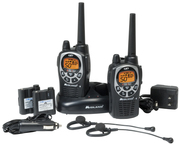 GXT1000VP4 - (MSRP $89.99) - 22 channels plus 28 extra channels, 285 privacy codes, NOAA weather alert radio with weather scan, LCD backlit display, vibrate alert, silent operation, whisper mode, HI/MED/LO power settings, eVOX (9 levels), channel scan, keypad lock, group call, 10 call alerts, auto squelch, monitor, dual power options, roger beep, keystroke tones, mic and headphone jacks, drop-in charger capable, battery life extender, water resistant, JIS4 waterproof.
GXT1000VP4 - (MSRP $89.99) - 22 channels plus 28 extra channels, 285 privacy codes, NOAA weather alert radio with weather scan, LCD backlit display, vibrate alert, silent operation, whisper mode, HI/MED/LO power settings, eVOX (9 levels), channel scan, keypad lock, group call, 10 call alerts, auto squelch, monitor, dual power options, roger beep, keystroke tones, mic and headphone jacks, drop-in charger capable, battery life extender, water resistant, JIS4 waterproof.
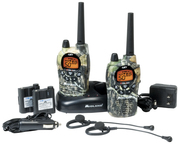 GXT1050VP4 - (MSRP $99.99) - Camo shell, 22 channels plus 28 extra channels, 285 privacy codes, NOAA weather alert radio, LCD backlit display, vibrate alert, silent operation, whisper mode, HI/MED/LO power settings, eVOX (9 levels), channel scan, keypad lock, group call, 10 call alerts, auto squelch, monitor, dual power options, roger beep, keystroke tones, mic and headphone jacks, drop-in charger capable, battery life extender, water resistant, JIS4 waterproof.
GXT1050VP4 - (MSRP $99.99) - Camo shell, 22 channels plus 28 extra channels, 285 privacy codes, NOAA weather alert radio, LCD backlit display, vibrate alert, silent operation, whisper mode, HI/MED/LO power settings, eVOX (9 levels), channel scan, keypad lock, group call, 10 call alerts, auto squelch, monitor, dual power options, roger beep, keystroke tones, mic and headphone jacks, drop-in charger capable, battery life extender, water resistant, JIS4 waterproof.
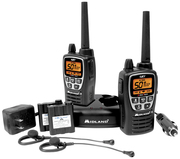 GXT2000VP4 - (MSRP $119.99) - 22 channels plus 28 extra channels, 142 privacy codes, NOAA weather alert radio with weather scan, LCD backlit display, vibrate alert, silent operation, whisper mode, HI/MED/LO power settings, eVOX (9 levels), channel scan, keypad lock, group call, 15 call alerts, 5 animal call alerts, auto squelch, monitor, dual watch, dual power options, SOS siren, roger beep, keystroke tones, HD dynamic audio, mic and headphone jacks, EXTREME Lithium-Polymer battery pack, ultra fast charge, drop-in charger capable, battery life extender, water resistant, JIS4 waterproof.
GXT2000VP4 - (MSRP $119.99) - 22 channels plus 28 extra channels, 142 privacy codes, NOAA weather alert radio with weather scan, LCD backlit display, vibrate alert, silent operation, whisper mode, HI/MED/LO power settings, eVOX (9 levels), channel scan, keypad lock, group call, 15 call alerts, 5 animal call alerts, auto squelch, monitor, dual watch, dual power options, SOS siren, roger beep, keystroke tones, HD dynamic audio, mic and headphone jacks, EXTREME Lithium-Polymer battery pack, ultra fast charge, drop-in charger capable, battery life extender, water resistant, JIS4 waterproof.
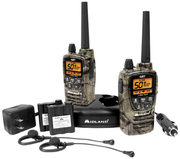 GXT2050VP4 - (MSRP $129.99) - Camo shell, 22 channels plus 28 extra channels, 142 privacy codes, NOAA weather alert radio with weather scan, LCD backlit display, vibrate alert, silent operation, whisper mode, HI/MED/LO power settings, eVOX (9 levels), channel scan, keypad lock, group call, 10 call alerts, 5 animal call alerts, auto squelch, monitor, dual watch, dual power options, SOS siren, roger beep, keystroke tones, HD dynamic audio, mic and headphone jacks, EXTREME Lithium-Polymer battery pack, ultra fast charge, drop-in charger capable, battery life extender, water resistant, JIS4 waterproof.
GXT2050VP4 - (MSRP $129.99) - Camo shell, 22 channels plus 28 extra channels, 142 privacy codes, NOAA weather alert radio with weather scan, LCD backlit display, vibrate alert, silent operation, whisper mode, HI/MED/LO power settings, eVOX (9 levels), channel scan, keypad lock, group call, 10 call alerts, 5 animal call alerts, auto squelch, monitor, dual watch, dual power options, SOS siren, roger beep, keystroke tones, HD dynamic audio, mic and headphone jacks, EXTREME Lithium-Polymer battery pack, ultra fast charge, drop-in charger capable, battery life extender, water resistant, JIS4 waterproof.
We will keep you updated with more information as it becomes available.





